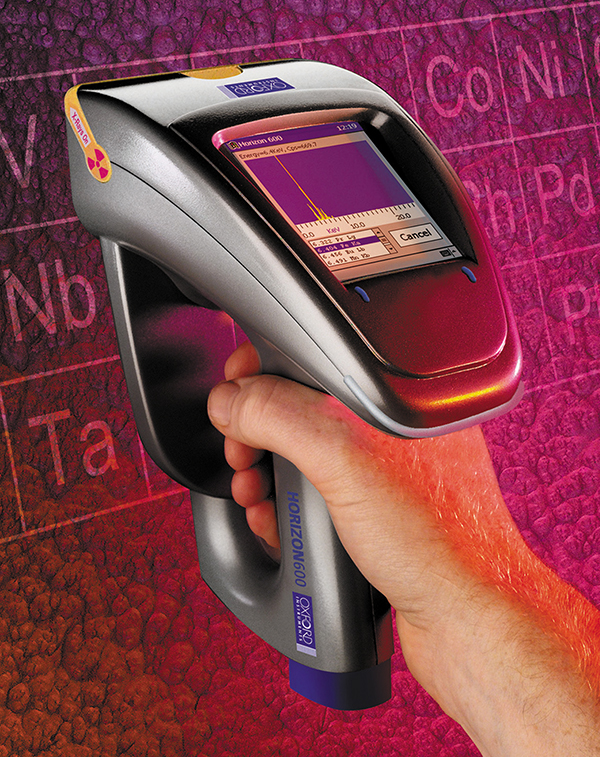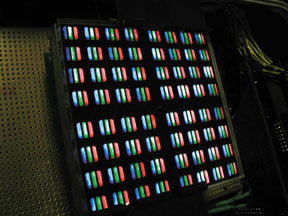
Creating With Carbon
By combining the first variety of X-ray tubes ever available with a carbon-based nanotube innovation born just over a decade ago, Applied Nanotech, Inc., is helping to put the nanotechnology field on the map with promising new advances aimed at revolutionizing medicine, television, and everything in between.
A subsidiary of SI Diamond Technology, Inc., Applied Nanotech, of Austin, Texas, is creating a buzz among various technology firms and venture capital groups interested in the company's progressive research on carbon-related field emission devices, including carbon nanotubes, filaments of pure carbon less than one ten-thousandth the width of human hair. Since their discovery in 1991, carbon nanotubes have gained considerable attention due to their unique physical properties. For example, a single perfect carbon nanotube can range from 10 to 100 times stronger than steel, per unit weight. Recent studies also indicate that the nanotubes may be the best heat-conducting material in existence. These properties, combined with the ease of growing thin films or nanotubes by a variety of deposition techniques, make the carbon-based material one of the most desirable for cold field emission cathodes.
Even more, the carbon nanotube may just one day be the choice composite used to bear the weight of NASA's fantastic future space travel concept, the space elevator, which would serve as a low-energy, mass transportation system for space-bound personnel, satellites, and other payloads. Although development of a space elevator could take as many as 100 years to successfully accomplish, NASA scientists are currently mulling over the possibilities of using carbon nanotubes to produce the elevator's long cable. This cable would be attached to a point on the Earth's equator, and extend into space, with its center of mass at geostationary Earth orbit.
Applied Nanotech is blending this next-generation technology of unparalleled strength and conductivity with cold cathode X-ray tubes, which were first introduced in the late 19th century, only to vanish quickly with the invention of a hot cathode called ductile tungsten in 1910. With support from NASA's Jet Propulsion Laboratory (JPL) under a Small Business Innovation Research (SBIR) contract, Applied Nanotech was able to bring cold cathode technology back to life with the mindset to produce smaller and more energy-efficient X-ray devices, especially ideal for applications requiring minimum power within harsh environments. NASA is considering replacing the standard hot cathodes used on satellites with the carbon cold cathode technology as a source for low power electric propulsion thrusters. Applied Nanotechs collaboration with JPL has allowed the company to extend the applications of its cold cathode technology and enhance its licensing policies.
For its first commercial achievement involving carbon cold cathodes, Applied Nanotech customized and sold the technology to Oxford Instruments plc—based in the United Kingdom, with American offices in Concord, Massachusetts, and Clearwater, Florida—for use in the company's Horizon600 self-contained, portable X-ray fluorescence spectrometer. The Horizon600's unique digital cold cathode X-ray tube allows for pinpoint therapy in medical fields such as brachytherapy, in which intra-coronary radiation is used to relieve blockages and prevent restenosis in stents, and dentistry, all at a lower cost and greater safety than conventional methods, due to the absence of radioactive isotopes. With its ability to perform analyses on a range of 20 different chemical elements within seconds, the hand-held device is also designed to detect asbestos, lead, and other dangerous contaminants hidden within walls, floors, and ceilings.
The ergonomically designed Horizon600 instrument features a color touch screen display for ease of use, a multi-channel digital signal processor for quick, stable results, and a built-in Microsoft® Windows® Pocket PC operating system complete with analytical software and an SQL database for results storage. It runs on a rechargeable, high power battery, allowing for extensive operation time, short "warm-up" for instant measurements, and overall low power consumption. In addition to Oxford Instruments, Applied Nanotech is supplying carbon nanotube cold cathodes to MediRad of Ra'anana, Israel, and a Japanese company, both of which are leaders in developing new miniature X-ray tubes for medical applications.
Through its SI Diamond parent, Applied Nanotech also completed various SBIR projects with NASA's Glenn Research Center and Johnson Space Center that have influenced the company's understanding of high-definition picture element tubes (PETs). Applied Nanotech is now incorporating PETs, in conjunction with thin carbon films, in large, flat panel nanotube displays for indoor and outdoor lighted advertising billboards. The company believes that these types of displays will eventually take control of a market that is presently pushing plasma and liquid crystal displays as top-of-the-line technologies.
The carbon-based lighted displays developed under SI Diamond will be applied to the forthcoming VERSAtile™ electronic billboard product line, which is similar to the light-emitting diode (LED) displays seen in New York's Times Square, but at a quarter of the cost, according to the company. Unlike LED-based displays, however, SI Diamond's are completely viewable in direct sunlight, even from a 45-degree angle.
Applied Nanotech recently licensed its PET technology to two Japanese corporations, one of which is imaging solutions specialist Canon, Inc., in an effort to commercialize a new breed of superior, high-resolution, large-format televisions, otherwise known as "slim wall televisions." Manufacturing is expected to take place by 2004, with hopes that the technology will draw appeal from the American market.
Microsoft® and Windows® are registered trademarks of Microsoft Corporation.
VERSAtile™ is a trademark of SI Diamond Technology, Inc.

A picture element tube possessing NASA-influenced carbon cold cathode technology developed by Applied Nanotech, Inc. This full-color field emission display tube is 3 by 3 inches and approximately 1 centimeter in depth, and can be combined with many similar tubes to make billboard-size displays.

The Horizon600 hand-held spectrometer can perform analyses on 20 different chemical elements within seconds. Image courtesy of Oxford Instruments plc.













